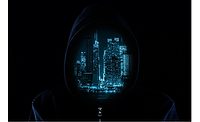What Do the Eye, Railroad Infrastructure and IKEA Have in Common?

Eye for an eye. One of the world’s biggest tourist
attractions, the London Eye, swapped out a problem security video system and
brought in thermal imaging cameras and scenario-based detection software to
help increase detection accuracy.
It’s security video.
Wimbledon-based Ipsotek installed its video analytics software on a trial basis after motion detection and a competitor’s analytics proved unable to cope with the demanding conditions at the site of the Eye in London. Using thermal imaging cameras, Ipsotek provided scenario-based detection software, which met requirements such as detection accuracy.Shadow Problems
Phil Foreman of Universal Security, the installation company, described the unusual challenges. “We ran trials to determine the best way of detecting intruders and soon came up against complications. The first video analytics system we tried could not distinguish between the constant shadows thrown by this huge revolving structure and movement that might be a genuine threat. But (the new) software has the intelligence to absorb information about conditions that are unique to a location.”Security complications multiplied, given that the London Eye is not only at a waterfront location but that water is tidal. It was not possible to put cameras on the river bank with a horizontal view because of waves and tidal movement, for example.
The London Eye stands on the south bank of the Thames near Westminster Bridge. During a 30-minute “flight,” visitors experience views from enclosed glass capsules which can be hired for corporate and private functions.
A major European national rail infrastructure operator has just ordered a digital video surveillance solution from Nice Systems. It will provide remote access to images from central command and control facilities, enabling surveillance managers in station control rooms with instant scenario reconstruction.

Power to IKEA. The monster retailer is using IP-based
security video in a store in its IKEA France operation. The system also uses
Power over Internet for ease of installation. The store operation may be
replicated across France.
PoE Cameras at IKEA
Then there is worldwide retailer IKEA.IKEA France has invested in IndigoVision’s IP video solution for security surveillance in its new 215,000 square foot flagship store in Grenoble. Swedish-based IKEA is one of the largest and best-known home furnishing retail groups in the world, with stores in 36 countries. IKEA invests heavily in security video technology in its stores to ensure their customers and staff are safe and secure at all times. The new store, which opened in October 2007, is seen as a test site for the adoption of IP-based security video for other new IKEA stores in France.
The 36-camera system was installed by Concept Maintenance. Advanced compression technology allows the entire system to operate on the store’s existing LAN with minimal impact on network bandwidth. The IKEA network supports Power-over-Ethernet (PoE), which allows any new IP cameras to be connected directly to the network via a single CAT-5 cable. This provides a very scalable and cost-effective solution for future expansion.
Commenting on the operation of the new system, Sylvie Weber, IKEA’s country security manager, said, “We are very pleased with the system and in particular with the superb image quality and the ‘Control Center’ user interface. It’s very easy to find and analyze a particular video clip, which can then be exported in a tamper-proof form for police evidence if required.”
The safe and speedy evacuation of staff and customers during a fire or incident is paramount to IKEA’s operational planning and they run many practice simulations. The security video system has been configured to help in situations like these. For example, when an emergency exit is opened a “Control Center” alarm is triggered which automatically pans the nearest camera to display the exit so operators can ensure a smooth and orderly evacuation.
Get Tough on China, Russia – and Canada, Too
The International Intellectual Property Alliance (IIPA) submitted its recommendations to U.S. Trade Representative Susan Schwab last month in the annual “Special 301” review of copyright piracy and market access problems around the world. IIPA’s submission discusses copyright protection, enforcement, and market access problems in 51 countries/territories, of which it recommends that 43 be placed on an appropriate USTR watch list. IIPA also discussed piracy and market access problems in an additional eight countries but is not recommending that these countries be placed on any formal list.In commenting on this year’s Special 301 process, IIPA’s Eric H. Smith noted, “The annual Special 301 process continues to be an important tool to bring to the attention of our trading partners the importance of high levels of protection for, and strong enforcement against piracy of, copyrighted works, both to the U.S. economy and to the economies of these countries. U.S. business and entertainment software, movies and home video entertainment, music and recordings, and books and journals continue to be an important driver of the U.S. economy -- contributing almost 13 percent to U.S. economic growth in 2005.”
This year’s submission in particular reflects the copyright industries’ grave concern with the explosive growth of online and mobile piracy. To meet this challenge, IIPA members are pressing for enhanced international norms, more effective and deterrent enforcement of those norms, and greater global law enforcement cooperation.
Smith added, “Canada joins China and Russia this year as countries of the greatest concern to the copyright industries. While there have been a few positive developments in these key markets over the year, the bottom line is that piracy levels have not come down at all or only marginally, and in some countries the situation has grown worse.”
More on intellectual property protection? See this month’s Trends column by Security Magazine Publisher Mark McCourt and a feature article, also elsewhere in this issue.
Looking for a reprint of this article?
From high-res PDFs to custom plaques, order your copy today!









